This essay was originally published in The Public Domain Review under a Creative Commons License. Please see their rules for reuse.
Ellen J. Stockstill on how William Booth, founder of the Salvation Army, placed the ideas and language of colonialism at the very heart of his vision for improving the lives of Victorian England’s poor.

The first sight to greet the reader upon opening William Booth’s In Darkest England and the Way Out (1890), his book on poverty in Victorian England, is a striking and elaborately detailed “chart”. The sprawling image, a lithograph which folds out of the book like a small poster, is part graphic representation and part statistical record — both an illustration of the country’s plight and Booth’s model for salvation. At the bottom of the image, the artist depicts “3,000,000 in the sea” drowning under the weight of a wide range of sins and states of depravity, flailing amidst waves labelled “drunkenness”, “slavery”, “rape”, “infanticide”, “prostitution”, “murder”, “illegitimacy”, “divorce”, “wife desertion”, “suicide”, “betting”, “homelessness” and, somewhat curiously, “sweating”. From the rocks either side Salvation Army Officers help people from the water and usher them towards the “City Colony”, where they will have opportunities at “rescue homes”, “bakeries”, and “cheap food depots”; where they will find permanent work, and live in homes for “married people”, “girls”, “inebriates”, “single women”, “children”, and “the homeless”.
From here clear pathways guide the way to the peaceful, green, and spacious “Farm Colony”, and then still farther on to the more distant “Colony Across the Sea”, with routes shown to British colonies, the United States, and “all parts of the world”. Flanking this utopian image of social reform stand columns bearing numerical data about “prostitutes” (over 30,000 in London, 100,000 in Great Britain); “criminals” (32,000 in prison); “drink” (“There are half a million drunkards in Great Britain”) and “drink traffic” (120,000 “Licensed Drinks Shops”); “destitution” (993,000); “the poor” (100,000 homeless); and “misery” (190,000 in workhouses). The bases of these columns inform viewers that 2,297 people died from suicide and 2,157 were found dead the previous year. On the plinths below are carved a litany of sins, from “reviling” and “fornication” to “lying” and “avarice”.
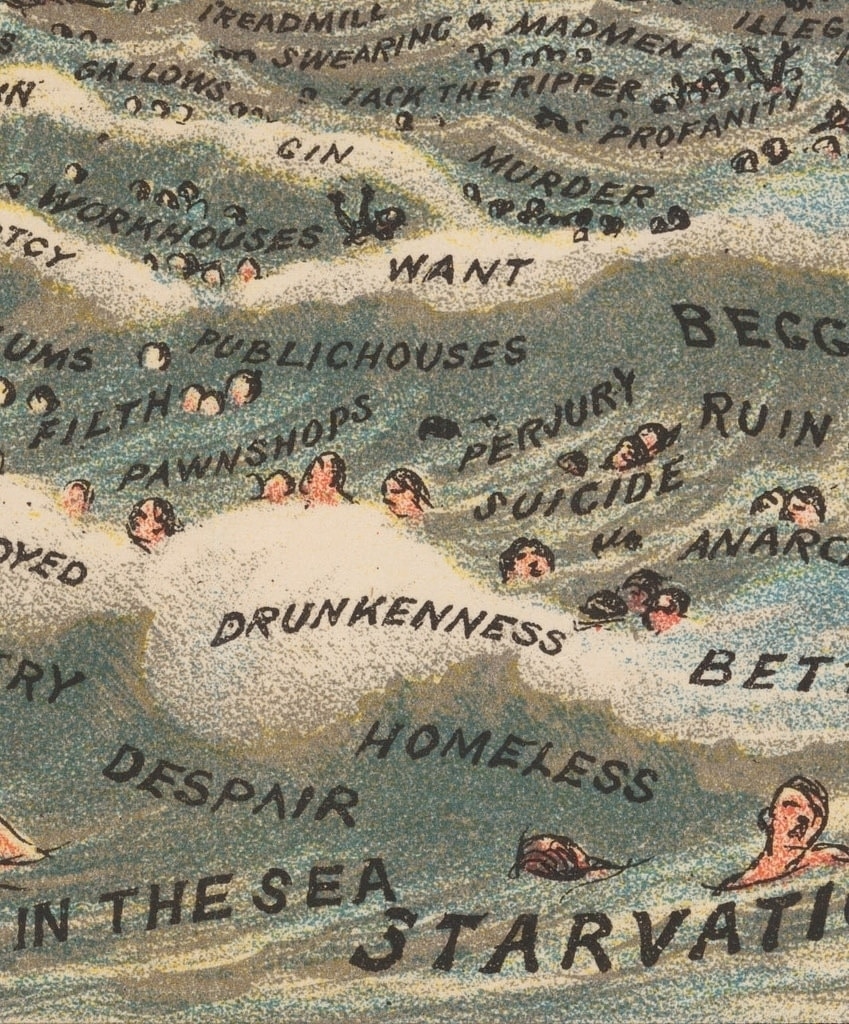
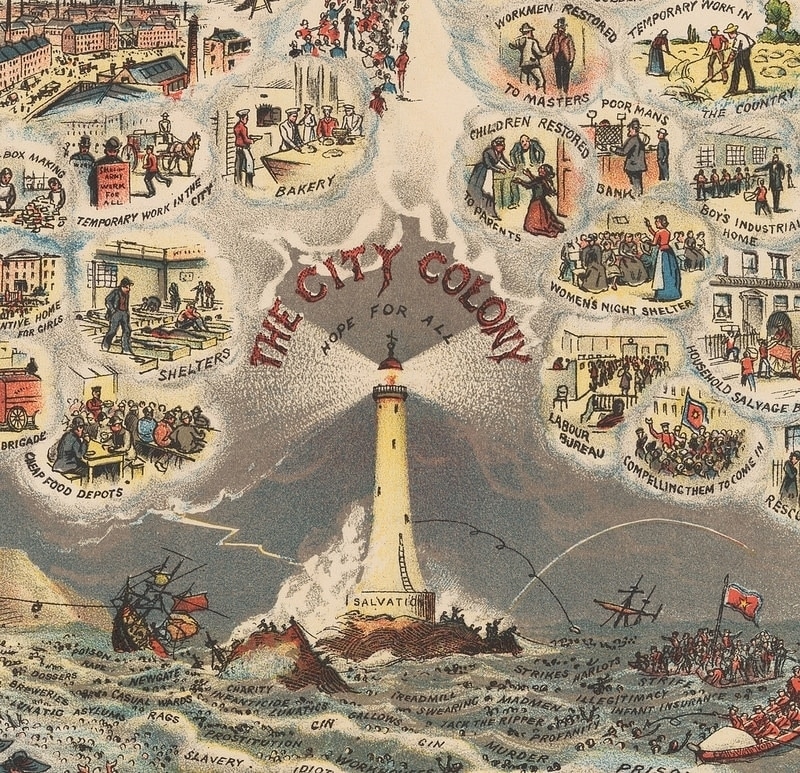
This depiction of communal blight and remediation traces a move from oppression to liberation not only in the shift away from sin but also in the shift from dark enclosure to bright, wide open space. In many ways, it mimics Michelangelo’s The Last Judgement and other works of Christian art that juxtapose the struggling bodies of the damned with the heavenly bodies of the saved and the glory of such an ascension. This salvific movement is echoed too in the structure of the book: Part I is entitled “The Darkness” and Part II “Deliverance”. It is a movement that speaks also of the colonial model — the drowning souls are plucked from the sea so that they can enjoy a better life in a colonized space specially designed to educate, reform, employ, and civilize them.
A quarter of a century earlier, in 1865, William Booth (1829–1912), together with his wife Catherine Mumford Booth (1829–1890), founded the Christian Mission in Whitechapel — an organization that would later become the Salvation Army. Harold Begbie, who wrote a 1920 biography of William Booth, said that “at the beginning of his career in London, it is quite clear, William Booth had one remedy, and only one remedy, for the distresses of mankind, and that the Gospel.” According to Begbie, Booth did, however, later acknowledge “how economic conditions can so oppress and bear upon the soul that its natural functions of love, worship, and aspiration may be almost completely inhibited.” Although Booth ultimately came to promote a combination of religious teaching with sweeping social reform as the way to save England’s poor, he still prioritized the saving of souls as key to his “Army’s” work. This emphasis on salvation from social ills such as poverty and addiction is nowhere better encapsulated than in his 1890 bestseller. Although largely written by William T. Stead (1849–1912), the newspaper editor responsible for the controversial “Maiden Tribute of Modern Babylon” investigations into child prostitution, In Darkest England and the Way Out was published under Booth’s name alone. And the idea at the heart of the work — this unusual image of an England in need of “colonizing” — is also very much his.
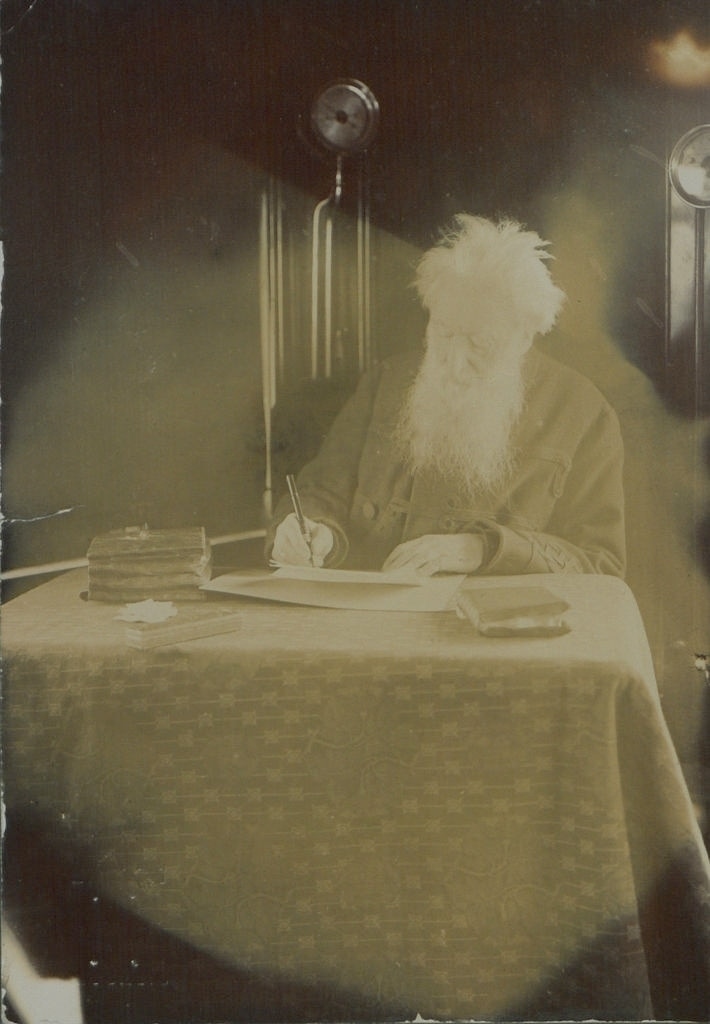
By portraying England as a place full of violence, sexual deviancy, and addiction, Booth equates it with Africa, which at this time was seen by many of his compatriots as a place of darkness in need of salvation. This image of Africa as “the dark continent”, and indeed the title of Booth’s book itself, draws on explorer H. M. Stanley’s highly popular and melodramatic account of his doomed trip through Africa published earlier that year, In Darkest Africa. Booth explicitly pairs his text with Stanley’s, describing an “African Parallel” and encouraging his audience to apply their entrenched views of African people and culture to the poor of England. After quoting Stanley’s descriptions of the landscape and people of the Congo at length, Booth presents his position: “It is a terrible picture, and one that has engraved itself deep on the heart of civilisation. But while brooding over the awful presentation of life as it exists in the vast African forest, it seemed to me only too vivid a picture of many parts of our own land. As there is a darkest Africa is there not also a darkest England?” He highlights similarities between the two places, arguing that while Africa “is all trees, trees, trees”, impenetrable and dark, London “is all vice and poverty and crime”, and while “ivory raiders . . . brutally traffic in the unfortunate denizens of the forest glades . . . publicans . . . flourish on the weakness of our poor.” He continues, conjuring emotional images to connect the two distant lands:
Hard it is, no doubt, to read in Stanley’s pages of the slave-traders coldly arranging for the surprise of a village, the capture of the inhabitants, the massacre of those who resist, and the violation of all the women; but the stony streets of London, if they could but speak, would tell of tragedies as awful, of ruin as complete, of ravishments as horrible, as if we were in Central Africa; only the ghastly devastation is covered, corpse-like, with the artificialities and hypocrisies of modern civilisation.
Darkest Africa and England, according to Booth, “are alike” in “monotonous darkness . . . malaria . . . gloom” and “dwarfish de-humanized inhabitants.” Booth, an astute rhetorician, admits that his “African parallel” has limits, but he asks readers to examine their interests and biases in supporting the work of imperialism overseas:
An analogy is as good as a suggestion; it becomes wearisome when it is pressed too far. But before leaving it, think for a moment how close the parallel is, and how strange it is that so much interest should be excited by a narrative of human squalor and human heroism in a distant continent, while greater squalor and heroism not less magnificent may be observed at our very doors.
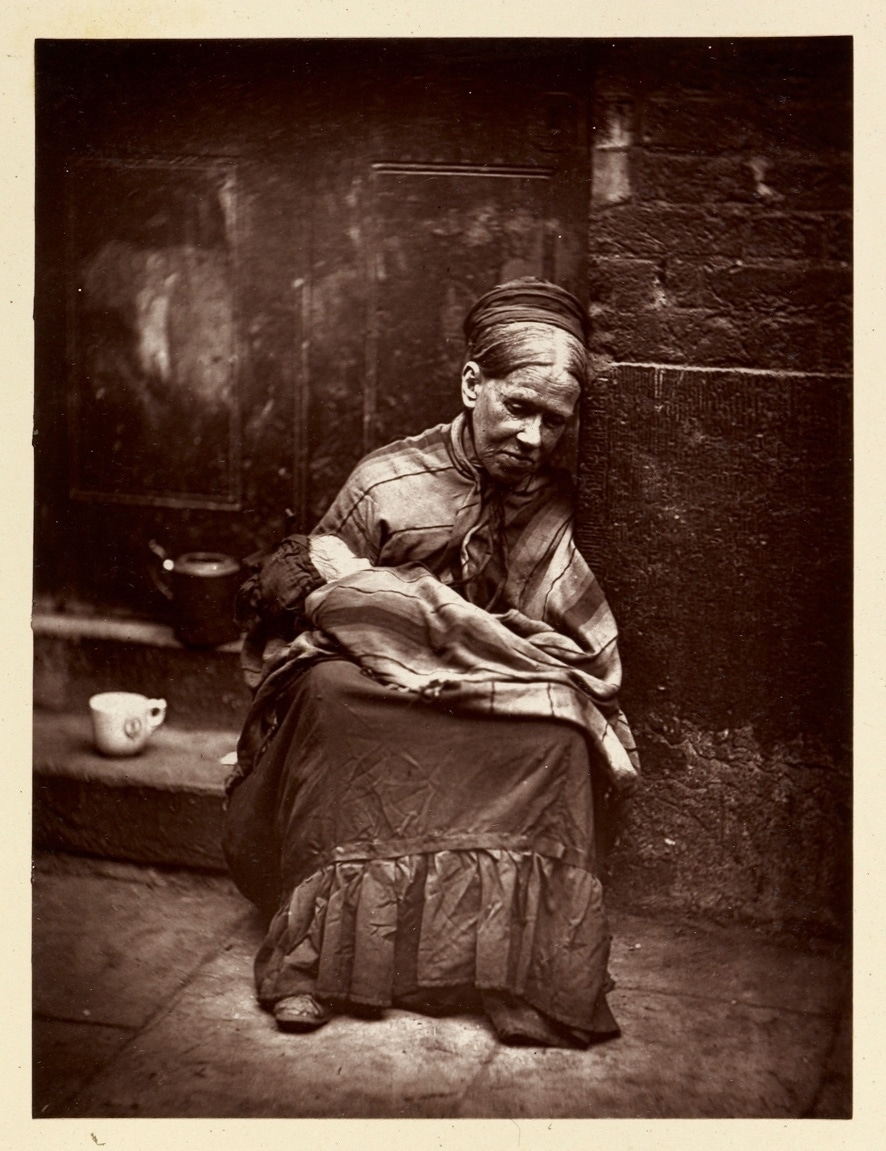
In these lines, Booth seeks to unite differing attitudes to poverty under an overarching imperial ideology that his readers, he assumes, have already accepted as rational and worthy of support. His vision for a better England is folded into an already established energizing myth of empire that maintains the ability, and even the duty, of the British to reform and civilize “degenerate” subjects. The message is clear: there is a need for missionary work in the very capital of the empire itself. Evangelical fervor and ardent desire for reform here meet the rhetoric of imperialism.
Of course, colonialism in Booth’s ideas was not limited merely to the realm of metaphor or rhetoric: the British colonial project provided the very mechanism by which these ideas were to be realized. Having established England as a site of darkness, Booth puts forward his “scheme” for “Deliverance” to the light — a project that links moral and religious reformation with worthwhile employment in carefully constructed colonies at home and abroad. His interdependent model was meant to provide “work for all” through a “scheme” that “divides itself into three sections, each of which is indispensable for the success of the whole.” Booth calls this three-part scheme a “patriarchal family” and describes how each part leads into the next, creating a funnel of sorts that ultimately moves across the sea:
The Scheme, in its entirety, may aptly be compared to A Great Machine, foundationed in the lowest slums and purlieus of our great towns and cities, drawing up into its embrace the depraved and destitute of all classes; receiving thieves, harlots, paupers, drunkards, prodigals, all alike, on the simple conditions of their being willing to work and to conform to discipline. Drawing up these poor outcasts, reforming them, and creating in them habits of industry, honesty, and truth; teaching them methods by which alike the bread that perishes and that which endures to Everlasting Life can be won. Forwarding them from the City to the Country, and there continuing the process of regeneration, and then pouring them forth on to the virgin soils that await their coming in other lands, keeping hold of them with a strong government, and yet making them free men and women; and so laying the foundations, perchance, of another Empire to swell to vast proportions in later times. Why not?
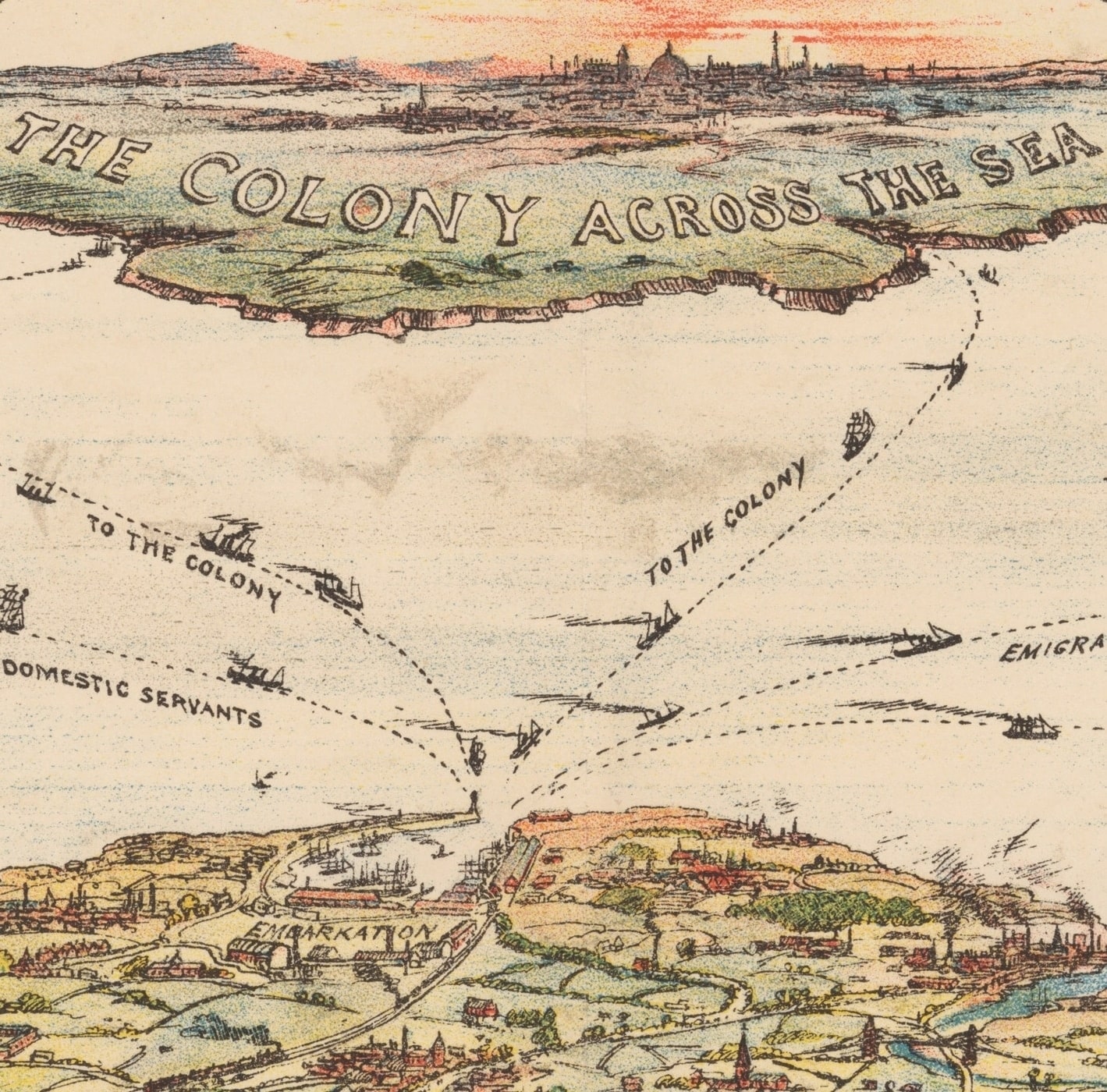
Booth’s closing question in the passage, “Why not?”, subtly reveals confidence, not only in progressive reforms, but also in the imperial project. If one can take advantage of other spaces as places for new opportunity, why not? Thus the imperial power of the British Empire proves central to providing the “way out” of “Darkest England”.
The frontispiece and text of In Darkest England and the Way Out, of course, assume that mass areas of the world are blank spaces that the British are entitled to occupy and use for their own purposes. Booth writes, “All who have given attention to the subject are agreed that in our Colonies in South Africa, Canada, Western Australia and elsewhere, there are millions of acres of useful land to be obtained almost for the asking.” Booth cites South Africa as an ideal space to set up an emigration funnel with the Salvation Army because it “presents to us great advantages for the moment. There is any amount of land suitable for our purpose which can be obtained, we think, without difficulty.” His assessment of the landscape involves analysis of the amount of land and how easily it could be “obtained”; he does not detail how the land would be acquired or how colonists would interact with current inhabitants. Booth’s assessment also ignores other colonial powers like the Dutch who would challenge British expansion in South Africa. He assumes that the British are fit to rule over any native population and that they would be more justified than other nations in doing so.
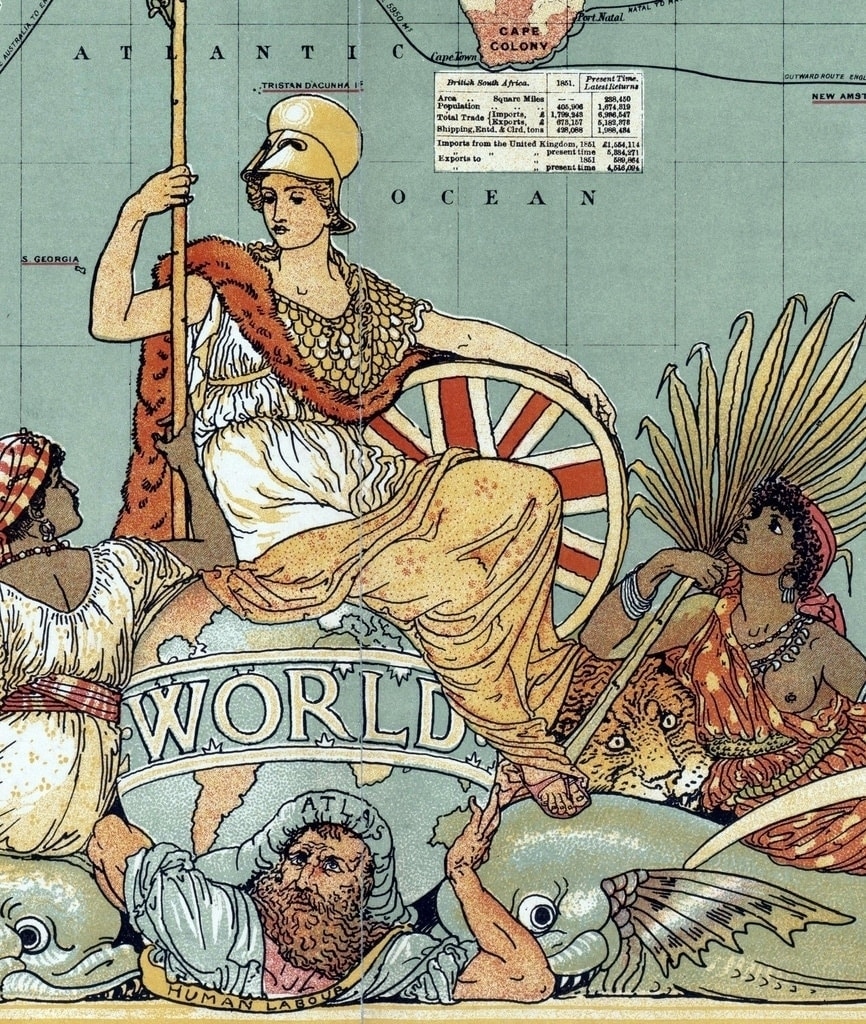
Booth’s scheme of In Darkest England and the Way Out also assumes that established British colonies offer a continuation of British life. He emphasizes the compatibility of life between England and her colonies by describing how boundaries have collapsed in an era of technological advancement: “The world has grown much smaller since the electric telegraph was discovered and side by side with the shrinkage of this planet under the influence of steam and electricity there has come a sense of brotherhood and a consciousness of community of interest and of nationality on the part of the English-speaking people throughout the world.” Here technology and language have made it possible to travel and communicate more effectively between distant regions, and Booth claims that it is “absurd to speak of the Colonies as if they were a foreign land. They are simply pieces of Britain distributed about the world, enabling the Britisher to have access to the richest parts of the earth.” A few pages later, he describes his ideal emigration process “as the unmooring of a little piece of England, and towing it across the sea to find a safe anchorage in a sunnier clime.” The presentation of these destinations (with different climates, cultures, and people) as little Britains allows Booth to position colonies as approachable sites full of opportunity. While other tales of exploration and adventure might make a British audience understand the colony as an exotic space, Booth hopes to make his audience see the colony as welcoming and familiar — familiar enough to seem survivable, but different enough to seem like a place where a person can begin anew.
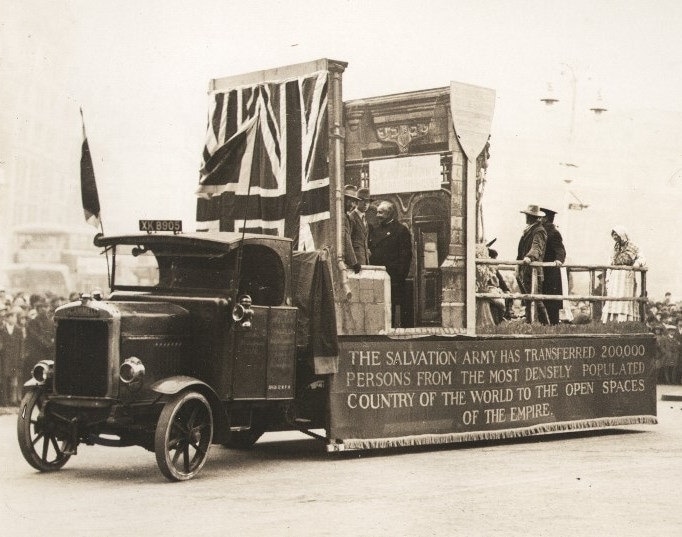
It may not be too surprising to hear that Booth’s model for England’s salvation never fully came into being as it exists on the colorful lithograph that begins In Darkest England, with its ambitious promise to ensure “work for all”. His book was, however, incredibly popular, selling hundreds of thousands of copies, and Booth’s ideas persisted, with the Salvation Army going on to facilitate the voluntary emigration of thousands. For several decades after Booth’s book was published, the Salvation Army, according to their website, “was the United Kingdom’s largest voluntary migration society, helping around 250,000 people to emigrate from the British Isles to the British Empire Dominions”. For many years it had a department devoted to emigration, and it did establish some farm colonies, including three in the United States in Colorado, Ohio, and California, through the American branch of the organization. While much of the material detailing the Salvation Army’s global mission vanished when its international headquarters was destroyed in the Blitz, some surviving artefacts indicate how the spirit of Booth’s colony scheme for England’s poor was followed. Such artefacts include copies of The Social Gazette, a weekly periodical that for three years at the beginning of the twentieth century featured a column called “Our Emigration Advice Bureau”, which counseled those who intended to emigrate; and Salvation Army Year Books that detail the workings of the organization’s Emigration Department from 1906 to 1981.
The idea that impoverished people living in urban centers could find opportunity in British colonies was not a notion held only by religious organizations like the Salvation Army. Many secular reformers and politicians also believed emigration to be a viable way to alleviate poverty, made possible by British imperial power that privileged white settlers over native residents. Indeed, as British imperial ideology embraced the notion of the civilizing mission, which emphasized colonizing as a process of reform and redemption, Christian missionaries could not help but be linked with a secular imperial project in terms of rhetoric. They shared a lexicon, even if at times they did not share faith or the same kind of concern over the colonized person’s soul.
Ellen J. Stockstill is Assistant Professor of English at Penn State Harrisburg where she teaches courses on British literature, critical theory, and composition. Her scholarship focuses on Victorian literature and culture, and she is co-author of the forthcoming A Research Guide to Gothic Literature in English (Rowman and Littlefield). Recent publications include essays in Nineteenth-Century Prose, and Victorian Medicine and Popular Culture (Routledge).
Public Domain Works
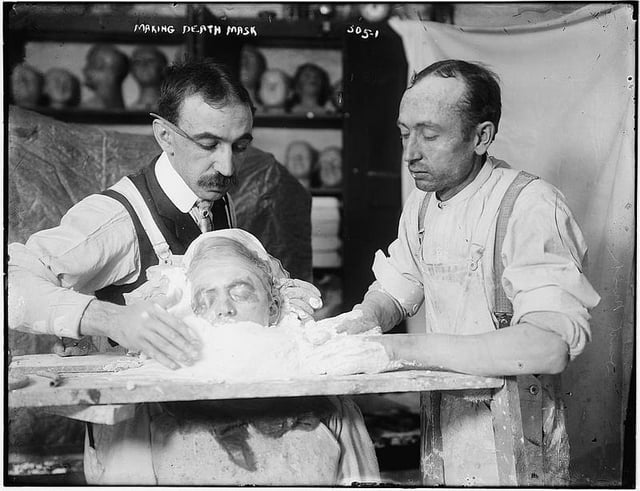 Out From Behind This Mask
Out From Behind This Mask
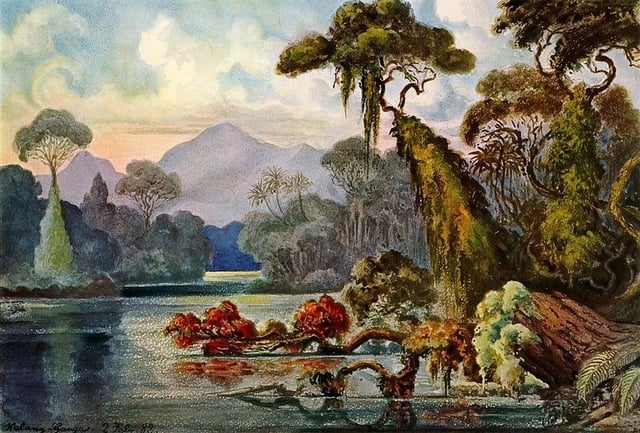 Human Forms in Nature: Ernst Haeckel’s Trip to South Asia and Its Aftermath
Human Forms in Nature: Ernst Haeckel’s Trip to South Asia and Its Aftermath